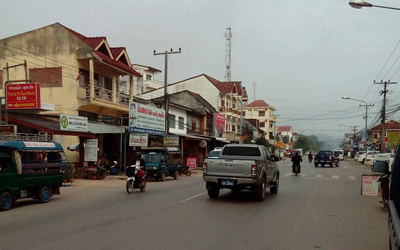Construction of the Laos-China railway in Luang Namtha province has yet to commence as some UXO clearance activities need to be completed before the rail builders can move full steam ahead with the project.
The Ministry of National Defence has reported to the Luang Namtha provincial government that one of three villages in Namor district where the railway will pass through has yet to be cleared of unexploded bombs.
A provincial coordinator of the Laos-China project, Mr Chanthachone Keolakhone, told the press on Wednesday that the three villages of Boten, Tinsan and Nateuy are located within the vicinity of the construction site.
The section in question where UXO may remain is some 16.9 kilometres long.
The Ministry of National Defence reported the mines are in Nateuy village, he said.
The railway bridge is part of the planned 427-km Laos-China railway that will run from the Chinese border to Vientiane through Luang Namtha, Oudomxay, Luang Prabang and Vientiane provinces.
The Chinese construction company completed about 70 percent of the marking of the railway in Luang Namtha before the company suspended the project to clear some landmines in Nateuy village.
The Minister of Public Works and Transport ordered the clearance of unexploded ordnance or UXO in the corridor through which the railway will pass.
Mr Chanthachone added that there are two stations in Luang Namtha but the big station will be in Nateuy village and the smaller one in Boten village, which is situated on the border between Laos and China.
Compensation is to be paid to the owners of parcels of land or buildings in the three villages that will be used or demolished to make way for the Laos-China railway.
Negotiations for compensation are currently underway. All of the affected families have agreed to make way for the construction of the Laos-China railway but say they expect reasonable compensation to move.
The railway project is 70 percent owned by China and 30 percent by Laos.
The US$6 billion railway, to be built over a distance of 427 km, will be completed by 2021.
The railway will use a 1.435-metre standard-gauge track. There will be 33 stations, 21 of which will be operational initially.
There will be 72 tunnels with a total length of 183.9 km, representing 43 percent of the railway’s total length. The line will also have 170 bridges totalling 69.2 km in length, accounting for 15.8 percent of the total.
Passenger trains will travel at 160 km per hour, while the speed of rail freight will be 120 km per hour.
The railway in Laos will link with the track in Thailand to form part of the regional rail link known as the Kunming-Singapore railway, covering a total distance of about 3,000km.



